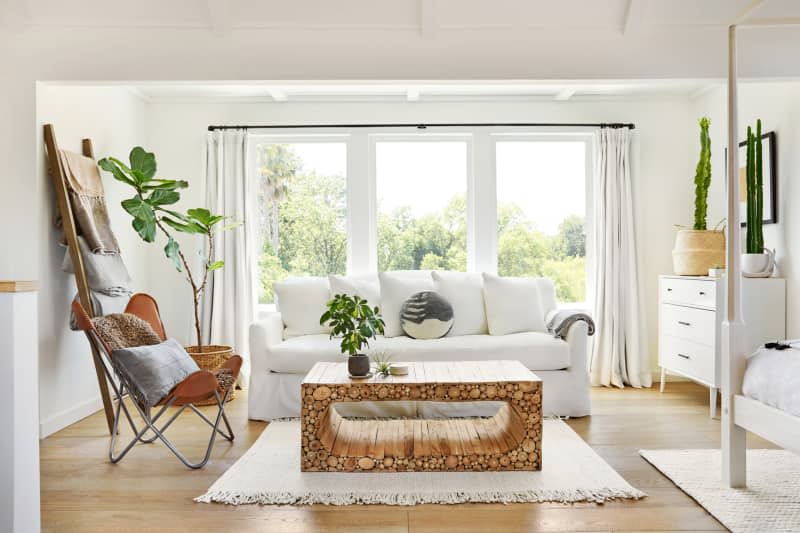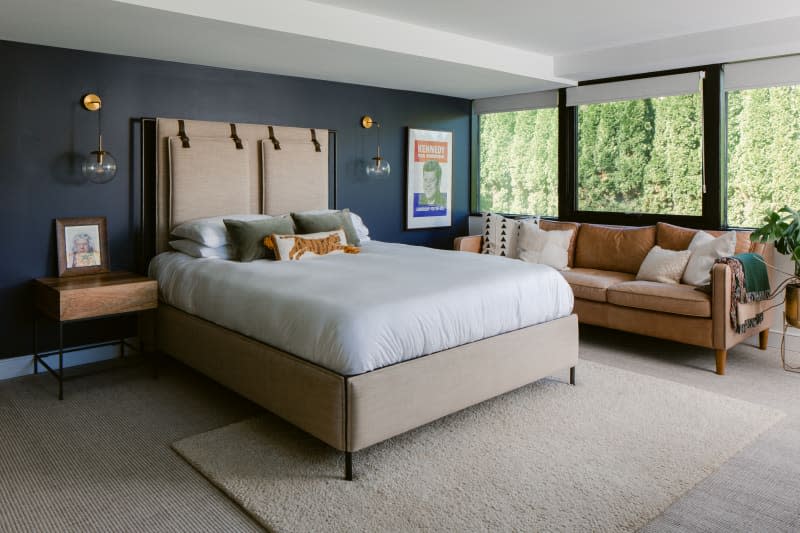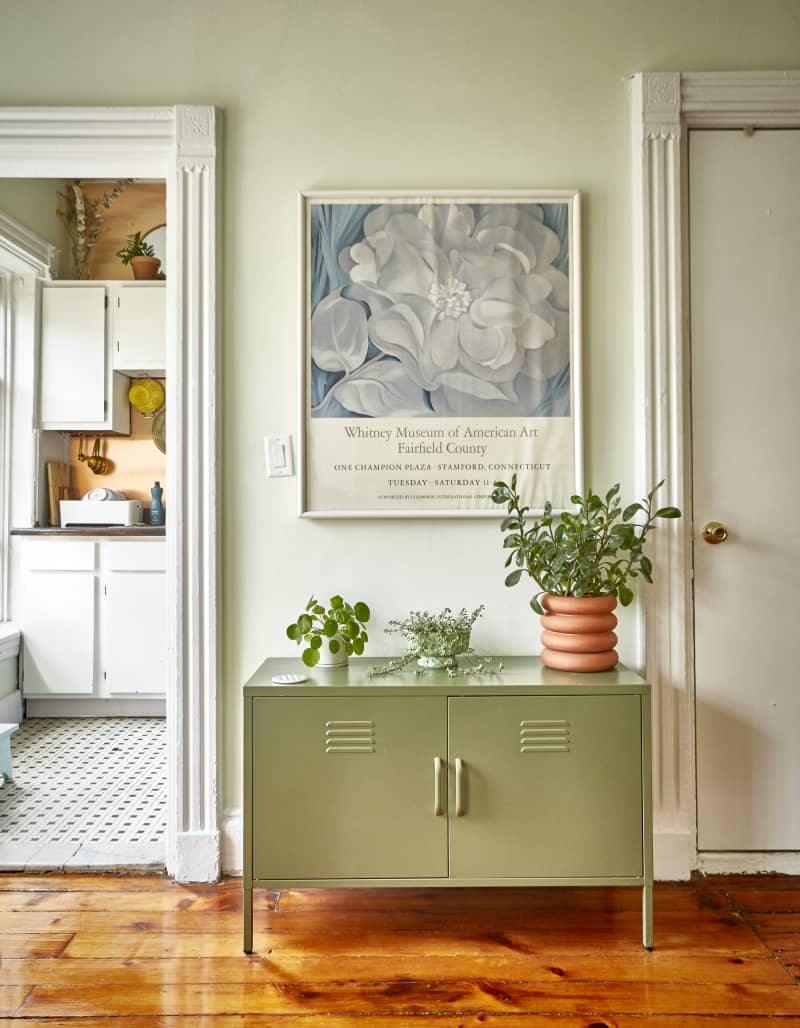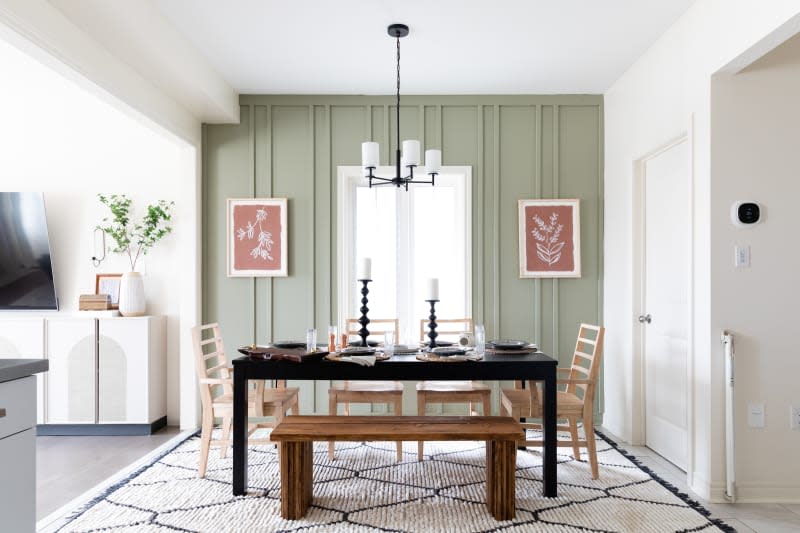The Only Advice You’ll Ever Need for Buying Furniture, According to Designers

Table of Contents
There’s no question that buying new furniture for your home can be a daunting task. Whether it’s striking the right balance between functionality and aesthetics, pairing a new piece with your existing furniture and decor, or determining and sticking to an appropriate budget, you have a lot of things to consider.
After being burned by a bad purchase a few too many times, I can personally attest to the anxiety and frustration that comes with furnishing your home. However, it doesn’t need to be a difficult or costly process, as long as you know what questions to think about along the way.
To get the scoop on all things furniture-buying, I spoke to three interior designers, who spilled everything you need to know about how to buy furniture for your home. Check out their tips and tricks below.
What to Consider When Buying Furniture
Interior design professionals agree that there are a few key things to consider when you set out to buy furniture for your home.
The size and layout of your space
Your budget
The color, style, and aesthetic you want
The function of the piece and where it will be used
The best time of year to purchase
Whether you want to shop online or in-store

Size and Layout
First, think about the layout of the room(s) you’re shopping for. For example, large, open-concept spaces will likely be organized differently than, say, a studio apartment, and you’ll want to find furniture silhouettes that fit proportionately in your spaces (i.e., maybe rethink a bulky Chesterfield sofa in a tiny living room). It’s also crucial to take accurate measurements in advance, not only of the room you’ll be styling the furniture in, but also of any entry points as well.
“Don’t forget to measure any doorways or narrow spaces like hallways that the piece has to get through to make sure it will fit,” says Rosanna Bassford, founder and principal designer of Memmo Interiors. The last thing you want is to splurge on a new sofa or bed, only to realize you can’t get it through the front door! Bassford also suggests taping out the furniture dimensions on the floor with painter’s tape so you can visualize how the piece will look — particularly if you’re debating between two sizes.
Budget
Next, set a realistic budget. This is often where the question of splurging versus saving comes into play, but all of the designers that I spoke to agreed: When it comes to staple, high-traffic furniture (think: sofas, mattresses, bed frames, dining chairs, etc.) it’s always worth it in the long run to invest in the best quality you can afford.
That being said, don’t be afraid to save where you can. “It’s okay to mix high-end, investment pieces with more budget-friendly finds,” say Tavia Forbes and Monet Masters, principal designers at Forbes+Masters. “Consider splurging on items that will be focal points in your home or that you’ll use frequently, such as a sofa or dining table, and save on accent pieces or accessories.”
Also, a well-made foundational piece doesn’t need to be brand-new! Consider potentially saving by buying vintage or secondhand furniture, which you can easily source from local thrift stores, Facebook Marketplace, and antique markets.
Timing
When it comes to making a big-ticket furniture purchase, don’t rush the process — you don’t need to buy everything immediately. “Take your time shopping for furniture, and don’t feel pressured to make a decision on the spot,” say Forbes and Masters. “It’s better to wait to find the perfect piece that fits your needs and style preferences than to settle for something you’re not completely happy with.”
Consider the time of year that you’re shopping, too, as certain seasons are better for scoring a deal on furniture than others. Generally, mid-summer and the end of winter are prime to look for furniture, as retailers usually discount their previous stock to prepare for new arrivals. Holidays like Labor Day, Black Friday, and Cyber Monday can also be ideal opportunities to snag a piece from your wish list at a discounted rate.

Style
Determining the style and overall aesthetic that you want in your home will help to drastically narrow down your furniture choices, Forbes and Masters add. To get started, do some initial research and find reference photos of spaces that you love (hello, Apartment Therapy house tours!). You can also browse ideas on Pinterest and Instagram or even take a look at portfolios of interior designers that you admire.
Don’t worry about nailing down every detail at this stage. A general idea of the color palette and look that you’re going for is usually all you need to kickstart your furniture shopping.
Comfort and Function
Style is undoubtedly important, but don’t forget to take the practicality of the piece into account — because no matter how cute something looks, if it’s uncomfortable or not functional, it’s only a matter of time before you’ll end up having to replace it (looking at you, white shag rug I got for my high-traffic hallway).
Consider how you’ll use the furniture in your space, plus whether a storage-filled or multi-functional piece would be beneficial (think: a Murphy bed, a sofa bed, a dining table that’s expandable, etc.). These questions are especially important if you’re outfitting a small living room or compact bedroom where maximizing space is essential.

Online vs. In-Store
Once you’re ready to start shopping, you’ll need to decide whether you’re comfortable browsing online or would prefer to go to a store. Ultimately, it’s up to personal preference, although there are pros and cons to each. Note that for brands with both brick-and-mortar and e-commerce experiences, you can assess product reviews online first to get a sense of the best furniture styles. You may even be able to order free upholstery swatches before you commit, too.
Buying Furniture Online
Pros
Vast product and retailer selection
Ability to filter by price, color, etc.
Easy and convenient
Access to product reviews and ratings
Cons
Photos may be deceiving
You can’t feel the products (fabric, texture, comfort, etc.)
Quality is tough to assess from photos
Shipping expenses
Amount of options can feel overwhelming
Buying Furniture In-Store
Pros
Can test out the pieces and get a sense of the scale, look, and feel in person
You don’t always have to wait for delivery
Potentially faster returns
Cons
Selection may be limited
Prices can be higher
Often takes travel time to browse
Shipping and lead times still exist if products aren’t in stock

